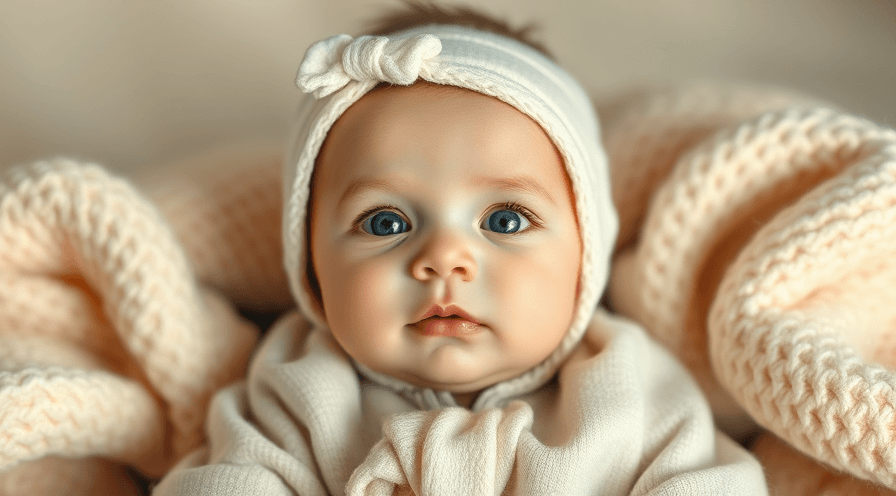When Can Babies Wear Gemstone Jewelry? Safety Guide
Babies wearing gemstone jewelry is a topic that brings together the desire for aesthetic appeal and cultural tradition with the utmost need for safety and practicality. Parents and caregivers often wonder when it is appropriate and safe for their little ones to start wearing gemstone pieces, whether for special occasions or everyday adornment. This article provides a comprehensive safety guide on when babies can wear gemstone jewelry, balancing concerns about health, choking hazards, and developmental suitability with the allure of these beautiful accessories.
Assessing the Right Age for Babies to Wear Gemstone Jewelry
The appropriate time for babies to wear gemstone jewelry is not just a matter of preference but heavily influenced by safety considerations. Specialists in pediatric health and child safety strongly recommend that newborns and infants under 12 months avoid wearing any jewelry. This caution stems from several risks, primarily choking hazards from small components, skin irritation, and accidental injuries.
Why the First Year is Critical
During the first year, babies develop rapidly but also explore the world primarily through tactile and oral means. This means they often bring objects, including jewelry, to their mouths. Gemstone jewelry, typically containing small stones, clasps, or beads, poses a significant choking risk if they become detached.
- Choking hazards: Loose gemstones or small parts can easily be swallowed or inhaled.
- Skin sensitivity: Baby skin is extremely delicate, and many metals or embedded stones may cause allergic reactions or rashes.
- Injury risk: Sharp edges or improper clasps could hurt a baby during sudden movements.
For these reasons, experts and pediatricians generally advise against gemstone jewelry for babies younger than 12 months. Instead, they recommend waiting until toddlers, approximately 18-24 months old, show improved motor control and less tendency to put objects in their mouths.
Choosing Safe Gemstone Options for Babies
Once babies are past the critical first year and if parents decide to introduce gemstone jewelry, selecting safe and appropriate pieces is crucial. Not all gemstone jewelry is created equal, and careful consideration should be given to materials, design, and craftsmanship.
Materials That Are Baby-Friendly
Some gemstones and metal settings are safer and more suitable for young children. For example:
- Natural gemstones: Opt for smooth, polished stones such as moonstone, rose quartz, or jade, which avoid sharp edges.
- Hypoallergenic metals: Jewelry made from surgical-grade stainless steel, sterling silver, or 14K gold minimizes the risk of allergic reaction.
- Lead-free components: Ensure the piece does not contain lead or other toxic materials often found in cheap costume jewelry.
Design Features for Safety
A child-safe design includes elements that reduce risk:
- Secure fittings: Strong clasps and tightly set stones prevent parts from loosening.
- Non-detachable parts: Avoid pieces with dangling charms or beads that can be pulled off easily.
- Comfortable size and weight: Light, small pieces that do not irritate or weigh down the baby’s sensitive skin.
Common Safety Concerns and How to Mitigate Them
Even with safe materials and designs, potential risks persist that warrant attention. Understanding these common safety concerns enables parents to proactively protect their babies.
Choking and Swallowing Hazards
Choking remains the most serious danger. Gemstone beads and pendants can dislodge and pose life-threatening threats if ingested. Surveillance when babies are wearing jewelry is non-negotiable.
- Never leave a baby unattended with jewelry on.
- Regularly inspect jewelry for wear and tear that might weaken connections.
- Remove jewelry during naps and sleep to prevent entanglement or choking as babies thrash.
Allergic Reactions and Skin Irritation
Babies can manifest allergic reactions to metals or chemical treatments used in gemstone jewelry. Signs include redness, swelling, or rashes around the worn area.
- Conduct a patch test on a small skin area before regular use.
- Choose certified hypoallergenic jewelry to reduce the risk of contact dermatitis.
- Wash the jewelry regularly to prevent dirt and bacteria buildup.
Tangling and Strangulation Risks
Necklaces or bracelets can pose strangulation hazards if the baby gets them caught on furniture or pulls forcefully. Strict oversight and proper sizing help mitigate this risk.
- Avoid long chains or elastic strings that stretch excessively.
- Use breakaway clasps that release under pressure.
- Limit jewelry wear time and always supervise.
Tips for Introducing Gemstone Jewelry to Babies
When parents decide to introduce gemstone jewelry to their babies, doing so thoughtfully ensures safety while preserving the meaningfulness of the pieces.
Start With Minimal and Simple Pieces
Begin with small studs or simple pendants that do not hang freely and avoid overwhelming the baby’s movement or causing discomfort.
Supervised and Occasion-Based Use
Rather than daily wear, use gemstone jewelry during special occasions or photo sessions. This reduces ongoing risk and preserves the jewelry’s sentimental value.
Educate Caregivers and Family Members
Ensure that everyone involved in the baby’s care understands the safety guidelines related to jewelry, recognizes risks, and knows when to remove pieces promptly.
Conclusion: Prioritizing Safety While Celebrating Beauty
Deciding when babies can wear gemstone jewelry requires balancing safety concerns with aesthetic and cultural desires. Waiting until babies reach at least 12 months of age—or preferably closer to 18-24 months—provides a safer window for introducing these beautiful accessories. Choosing hypoallergenic materials, safe designs, and exercising constant supervision further reduces risks of choking, allergic reactions, and injuries.
Parents and caregivers should always prioritize the baby’s health and comfort, treating gemstone jewelry more as occasional embellishments than everyday items. By adhering to the safety principles outlined in this guide, families can confidently incorporate gemstone pieces into their baby’s early life with added peace of mind. For more information or to explore safe jewelry options, consulting with pediatricians and certified jewelers is recommended.
Safeguarding a baby’s well-being while embracing tradition and style is possible with informed decisions—start smart, stay safe, and cherish every sparkling moment.
